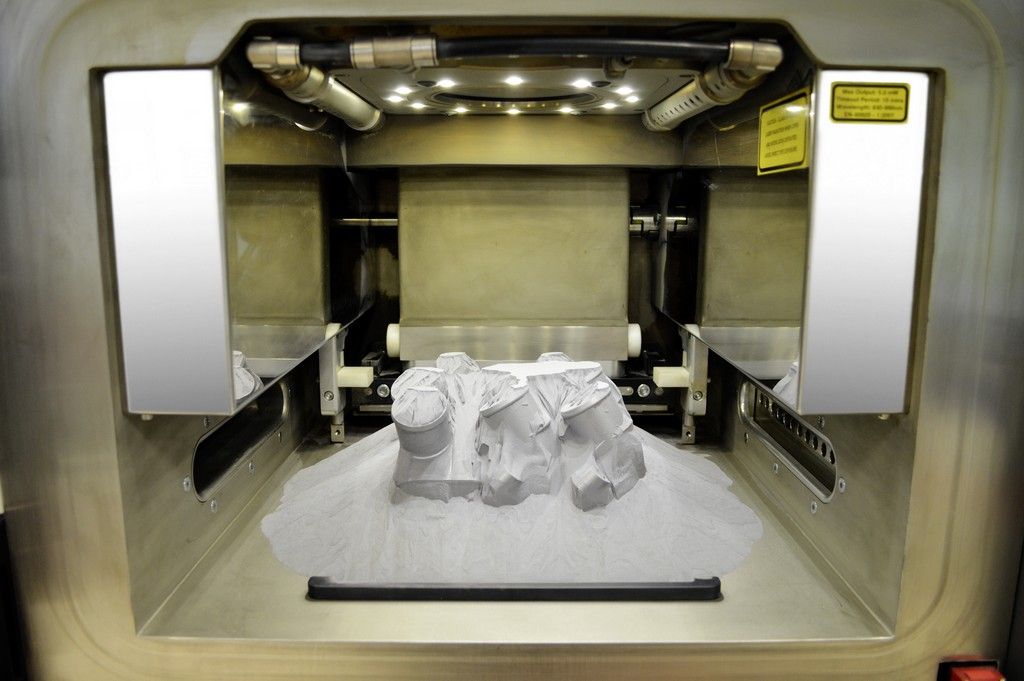The printed spare part, a thermostat cover for truck and Unimog models from older model series, has passed quality checks at Mercedes-Benz, and is now celebrating its premiere.
Metal parts from the 3D printer excel with their high strength and thermal resistance, and the process is suitable for the production of mechanically and thermally stressed components required in small numbers such as making peripheral engine parts, in-engine parts and also parts in cooling systems, transmissions, axles or chassis.
In contrast to the Selective Laser Sintering (SLS) used in the plastics sector, 3D printing of metallic components uses Selective Laser Melting (SLM). In the case of the thermostat cover, for example, the powdered aluminium/silicon material is applied in individual layers and melted by an energy source - usually one or more lasers.

The thermostat cover being shaped into the finished product.
When one layer is completed, a new layer of powder is applied automatically and the melting process is repeated. The process is repeated until a high-strength, three-dimensional aluminium component suitable for use in areas of high temperature has been produced. Thanks to the layered structure, the process also offers a level of geometrical freedom unmatched by any other production method.
Metallic components can be produced "at the touch of a button" with any geometry and in any numbers. The 3D replacement parts production began with rarely ordered aluminium parts. These excel with almost 100% density and greater purity than conventional die-cast aluminium parts. Apart from their high strength and hardness, as well as high dynamic resistance, their production requires no cost-intensive development work or procurement of special tools.
"The availability of spare parts during a workshop visit is essential for our customers – no matter how old the truck is, or where it is located. The added value of 3D printing technology is that it increases speed and flexibility, especially when producing spare and special parts. This gives us new possibilities for offering our customers spare parts rapidly and at attractive prices, even long after series production has ceased," said Mercedes-Benz Trucks marketing head Andreas Deuschle.
Mercedes-Benz Trucks said 3D metal printing could in future allow decentralised and much faster, local production directly in the worldwide Mercedes-Benz production locations.
Mercedes-Benz Trucks has been using 3D-printing technology to create high-quality plastic components, which is ideal for the production of smaller batches.










